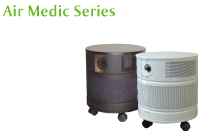Alpha-1 Antitrypsin Deficiency
(A-1ATD)
- What is A-1ATD?
- How do normal lungs work?
- What happens if there isn't enough alpha-1 antitrypsin?
- How does smoking worsen lung damage caused by the disorder?
- What are the risk factors for the disorder?
- How is the disorder inherited?
- What are the signs and symptoms of the alpha-1 antitrypsin deficiency?
- Can this disorder be treated?
- Alpha-1 Antitrypsin Deficiency At A Glance
What is A-1ATD?
Alpha-1 antitrypsin is a protein that is made in the liver. The liver releases this protein into the bloodstream. Alpha-1 antitrypsin protects the lungs so they can work normally. Without enough alpha-1 antitrypsin, the lungs can be damaged, and this damage may make breathing difficult. In addition, liver damage (hepatitis, cirrhosis) can occur in both children and adults. Alpha-1 antitrypsin deficiency is an inherited (passed down from parents) disorder that causes low levels of, or no alpha-1 antitrypsin in the blood.

Air usually enters the nose and mouth and goes down the air tube (trachea) to two main air passages (bronchi). These passages allow air to go into the right and left lung.
Each bronchus branches out into grape-like air sacs called alveoli. Through the alveoli, oxygen enters the bloodstream during breathing in (inspiration), and carbon dioxide, a waste product, leaves the body during breathing out (expiration).
White blood cells normally found in our bodies help protect us from infection. But white blood cells also release an enzyme, called neutrophil elastase, that can damage the lungs. In normal lungs, alpha-1 antitrypsin protects the lungs from the harmful effects of neutrophil elastase.
[ the rest of the article ]Google search on alpha one antitrypsin deficiency
AirMedic Models To Choose From
| AirMedic- EXEC Blend | AirMedic- VOCARB Blend | |
|
|
|

No comments:
Post a Comment